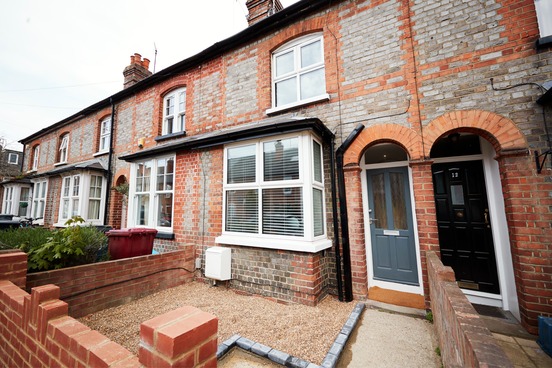
Houses of multiple occupation (HMOs) are a potentially lucrative business model for landlords. Rental yields for an HMO are typically higher than for standard family properties, but they are a little harder to manage.
Research carried out in 2019 by Precise Mortgages found that average rental yields were around 6.3%, compared to 5.5% overall in the buy to let sector. As a result, HMOs are popular with professional landlords seeking a higher, more secure gross rental income. But it’s worth pointing out that HMO management can be more time-consuming due to the increased level of red tape involved. In this article, we are going to give you an overview of HMO management for landlords.
What is an HMO?
The definition of an HMO in England and Wales is a property that houses three or more people from two or more separate households, who share facilities such as a kitchen and bathroom. In Scotland, a property is an HMO when it is shared by three unrelated tenants who share a kitchen, bathroom or toilet. HMOs are sometimes called ‘house shares’.
Previously, a property had to be a minimum of three storeys high to be classed as an HMO, but this rule was quashed for landlords in England and Wales in 2018.
What is a Large HMO?
A large HMO is classed as a property let to five or more people from two or more households. As above, they have access to shared facilities such as a kitchen and bathroom. Large HMOs must be licenced in England and Wales.
In some areas, landlords of smaller HMOs must also apply for a licence, so it’s wise to check if you need a licence before you invest.
Be aware that different councils have different criteria for classifying what is and what is not an HMO. Again, check the guidelines issued by your local authority before you dive in.
Benefits of HMOs

The main benefit of HMOs is increased rental yield, but demand for HMOs is also higher, as shared housing is more affordable.
33% of tenants are now in the 25-34 category. This demographic is the most likely to rent a room in an HMO. Furthermore, HMOs appeal to students and various workers seeking short-term accommodation. Demand for HMO accommodation is often much higher in towns and cities, where younger people often can’t afford to rent a self-contained flat.
Because of this flexibility, HMO landlords typically have fewer void periods. Even if you do have an empty room for a few weeks, you’ll still have income from your other tenants.
Using the same logic, HMO landlords have greater protection from problems caused by rental arrears.
The Risks of HMOs
Not all properties are suitable for conversion into an HMO. This type of rental model favours older, large Victorian properties with bigger rooms and several floors. These properties offer greater returns, but maintenance costs will almost always be higher due to the fact the building is a lot older.
The lack of suitable properties may make it harder to find one at a reasonable price point if your budget is tight.
HMO landlords need deeper pockets when they enter the sector. It’s expensive to convert an existing family home into an HMO, or it is if you adhere to planning requirements. HMOs are usually let as furnished, so you will need to purchase bedroom furniture and some items of furniture for communal areas, such as a sofa, dining table and chairs.
Management costs are higher for HMOs. You might want to budget for a regular cleaner for communal areas and a gardener (if there is a garden) so the property remains in a reasonable condition.
It’s harder to sell an HMO because the market for them is limited to other HMO landlords. If a property has been converted into an HMO, most regular buyers won’t touch it because of the cost of converting it back into a family home. This means capital growth can be restricted.
It’s not as easy to obtain mortgage funding for an HMO, but there are lenders out there if you shop around, but most are offered by specialist lenders such as Aldermore and Gatehouse. Many deals are only available via brokers, but some lenders, including the Leeds Building Society, do deal with landlords direct.
Leeds Building Society launched its range of fixed-rate HMO mortgages in 2016, in a bid to attract landlords whose properties had been reclassified as HMOs. It assesses smaller HMOs based on rental income and larger HMOs on projected rental yields in relation to the property value. Bath Building Society also offers HMO mortgages.
Products on offer currently include:
- A 3.89% fixed-rate five-year deal from the Bath BS
- A two-year fixed-rate 2.59% deal from the Leeds BS
Bear in mind that you will need a larger deposit for an HMO mortgage. Lenders typically offer a maximum 75% LTV. Mortgage fees are also higher as a rule, as the lender will want to carry out a specialist valuation. It may make more sense to borrow via a limited company rather than as an individual landlord but consult an expert before you decide whether setting up a limited company is beneficial.
Are You a Fit and Proper Person?
Where a landlord licence is required to run an HMO, the landlord must be a “fit and proper” person. Applications are assessed on their individual merits, but if you have previous convictions for fraud, violence, drugs offences, and more, you may not qualify for a licence.
What Every HMO Landlord Must do to Remain Compliant
There are many aspects of HMO management that also apply to all landlords, so we won’t discuss them in this article.
For example, HMO landlord must carry out timely repairs and maintain their properties. Like any other rental properties, you must also protect the deposits of your tenants in a government-approved scheme. And so on.
The following rules and regulations apply specifically to HMOs.
Fire Safety
Fire safety in HMOs is perhaps the most important. This topic easily encompasses an entire article all on its own, so we won’t go into too much detail here.
Because of the nature of an HMO, it’s considered a greater fire risk compared to a regular buy to let property. As such, you will need to meet minimum fire safety standards to qualify for an HMO licence. These include:
- Fitting fire safety doors
- Supplying fire extinguishers and fire blankets in communal areas such as kitchens
- Installing mains connected smoke alarms
- CO alarms fitted in at-risk rooms, such as rooms with gas appliances installed
- Larger HMOs with three or more storeys may need a fire alarm system fitted
- Special door handles and locks fitted
Each local authority has its own specific requirements. Speak to your local HMO enforcement officer to learn more.
Once you have an HMO licence and your tenants are installed, you are required to make sure fire escapes are always clear, i.e. not blocked by bicycles or pushchairs. Ensure tenants understand how to use fire prevention equipment and that this equipment is well-maintained and not tampered with.
Minimum Room Size
Information published on the RLA’s website states that, as of October 2018:
A HMO licence granted under Part 2 of the Housing Act 2004 (that is pursuant to mandatory and additional licensing schemes) must contain conditions requiring the licence holder to ensure that any room used for sleeping accommodation is:
- Not less than 6.51 m2 for one person over 10 years;
- Not less than 10.22 m2 for two persons over 10 years of age; and
- Not less than 4.64 m2 for one person aged under 10 years.
These sizes are the minimum. Local authorities can specify in their licencing guidelines that rooms should be larger, but they can’t enforce this. If your HMO has any rooms that are smaller than 4.64 m2, you must notify your local authority.
Place Contact Details in a Communal Area
Landlords and managers of HMOs are required, as per The Management of Houses in Multiple Occupation (England) Regulations 2006 and The Management of Houses in Multiple Occupation (Wales) Regulations 2006 to give contact information for the landlord/property manager to each HMO household and display this information in a communal area of the HMO.
Waste Collection
Landlord licences granted after October 2018 will include a clause that states HMO landlords must comply with the local authority’s waste storage and disposal scheme.
- You are required to ensure there is a suitable place where refuse and recycling bins can be stored in a tidy manner
- Bins should be stored in a tidy manner
- Information should be provided to tenants clearly stating when refuse and recycling collections take place
- Let tenants know what can be recycled and what must be placed in the general waste bin
Communities are often blighted by waste overflowing from poorly managed HMOs.
Landlords who don’t keep a close eye on waste management at their HMOs risk being fined up to £30,000. Multiple breaches may lead to the termination of your landlord licence and a banning order being imposed.
Furniture Must be Clean and fit for Purpose
HMOs are usually let on a furnished basis. At the beginning of a new tenancy, landlords must check that furniture is clean and undamaged. Any furniture provided in the HMO must be fire-rated, as per the Furniture and Furnishings (Fire) (Safety) Regulations 1988. This includes beds, sofas, mattresses, cushions, and even garden sun loungers.
Most modern furniture comes with a fire rating label, but if you pick up an old second-hand sofa or similar, do check.
The regulations don’t apply to soft furnishings like sleeping bags, curtains, or bedding.
Converting an Existing Property Into an HMO
The ideal scenario for getting into HMOs is when a landlord buys an existing HMO that’s already set up with tenants in place. In this instance, there won’t be much to do. But if you want to know what’s involved with starting from scratch or you want to purchase a residential property and convert it into an HMO, read on.
Have a Budget
Budget for the work. There’s little point in converting a property into an HMO if the work required is so extensive you won’t recoup your investment for at least ten years. Itemise what work needs doing and collect quotes. Consider all expenses, even smaller ones like supplying beds and buying cans of paint.
Local authorities carry out checks when a residential property is converted into an HMO. A Housing Health and Safety Rating System (HHSRS) risk assessment will be carried out within five years of the conversion. If any issues are identified, these must be fixed.
Remember, illegal HMO conversions may result in heavy fines and repossession of the property.
If you have a residential or standard buy to let mortgage on the property, you must tell your lender about your plans. They will most likely want you to switch to a specialist mortgage product. Failing to inform the lender means they can withdraw their funding.
Not all properties lend themselves to an HMO conversion. Some are just too small. The most suitable properties tend to be large and/or older. Ideally, a property should have at least two reception rooms, so even when one is converted into a bedroom the house still has a communal living/reception room. It isn’t mandatory, but it will make the property more attractive to tenants. If this isn’t possible, the kitchen should be large enough to fit a dining table and chairs.
When converting an HMO, think about the following:
The fabric of the building must be of a suitable standard. The electrical installation will need checking by a qualified electrician, who should give you an Electrical Installation Condition Report (EICR). Emergency lighting should be installed in all areas.
Make sure there is no asbestos in the property (be vigilant if the property was built pre-1980).
In addition:
- Is the roof in good shape?
- Is the property well-insulated?
- Do the kitchen and bathrooms need a refit?
- Are there enough toilets/bathrooms for the number of tenants?
Before converting attics and reception rooms, make sure they are large enough, as per the minimum room size guidelines. Ensure all work is carried out by a suitable contractor and planning is sought if required (check with the local planning department).
Each bedroom needs a suitable lock on the door, preferably a thumb turn lock.
In larger HMOs, more than one kitchen and bathroom may be needed. It’s worth putting time and money into fitting decent kitchens and bathrooms. Add features such as heated towel rails and easy to clean walk-in showers.
Pay attention to outdoor areas too. Tenants will want a place where they can sit outside in warm weather, where they can hang out with friends, have a BBQ, and relax. You don’t need to landscape the garden, but a nice patio or decking area will be a selling point. Provide some garden furniture and a shed to store it in.
Decorate the property once all building work has been completed. A fresh coat of paint will make the place more attractive.
If you have tenants lined up and the property hasn’t been decorated yet, let them choose from a selection of coloured paints. This will make the place feel more like home for them.
Setting up an HMO
Before you advertise for tenants, make sure everything is in order. The property should be fit for human habitation (free from damp, pests, warm, and well maintained). Everything must be in good working order and if required, you must have a landlord licence in place.
Look around. Is there enough room for the number of tenants you have planned? Are there enough toilet/kitchen/bathroom facilities? Larger HMOs will need more than one bathroom and kitchens may benefit from more than one fridge and washing machine. If you’re not sure of what to provide, check out other decent HMOs in the area to see how they are set up.
Have all your documentation in place and keep extra cash put aside to cover any cash flow problems.
Check your landlord insurance. Not all landlord insurance policies cover HMOs. You may need a specialist policy.
Have a cash flow forecast in place. Budget for voids, property damage, and the more frequent replacement of fixtures and fittings. Does the extra cost of running an HMO make the venture worthwhile? If not, reconsider whether this is the right business model for you.
Decide whether you want to manage your HMO, or you’d prefer to subcontract the job to an experienced letting agent. Be aware that not all letting agents are willing to manage HMOs, so you may need to shop around.
Routine HMO Management
Managing HMOs is a full-time job. From tenant disputes to routine maintenance and viewings, this is not something you can shoehorn into a couple of hours on a Saturday afternoon. Someone will need to be available at all times – make sure there’s another person on standby if that contact isn’t you.
Since there are likely to be regular maintenance issues, have trusted trades or a handyman who can fix things such as a blocked sink or broken lock at short notice.
Finding the Right Tenants

The right mix of tenants is critical for HMO harmony. It’s wise to select people who are more likely to get on when living together in the same house.
Houses gel better when the people living there have similar lifestyles. For example, a group of young professionals with active social lives and reasonable incomes are a better mix than a random group of students and working people. It’s in your interest to attract birds of a feather. There will be fewer disputes and void periods.
Have an ideal tenant in mind and look for people who fit the bill. If you have existing tenants in place and they are happy together, consider allowing them a say in the tenant screening process.
Everyday HMO Issues
When several unrelated people share a house, it’s common for personality clashes and other disputes to arise.
When dealing with issues between tenants try to remain objective and professional.
Encourage your tenants to sort it out in-house, but if necessary, step in. Speak to all parties and try and form a picture of what’s actually going on, as opposed to listening to just one party’s complaints.
Speak to problem tenants and let them know if they don’t sort it out, they may be asked to leave. Inform the other tenants of your actions, so they don’t think you are ignoring the problem. Remember, if you want to evict a difficult tenant, you’ll need evidence of their behaviour, such as text messages, videos, photos, and testimony from other people. It is better to avoid evicting a tenant, so you should work it out with them where possible. If they are making life difficult for your other tenants though and they aren’t showing any willingness to address the issue act swiftly and decisively.
And finally…
Running an HMO is not something to jump into with your eyes closed. There is a lot to think about. If you have no previous experience in this area, talk to the experts first. Speak to your local housing officer to find out what is expected from you as an HMO landlord. Chat with letting agents and other HMO landlords in your area. Go online and pick the brains of your fellow landlords in public forums.



